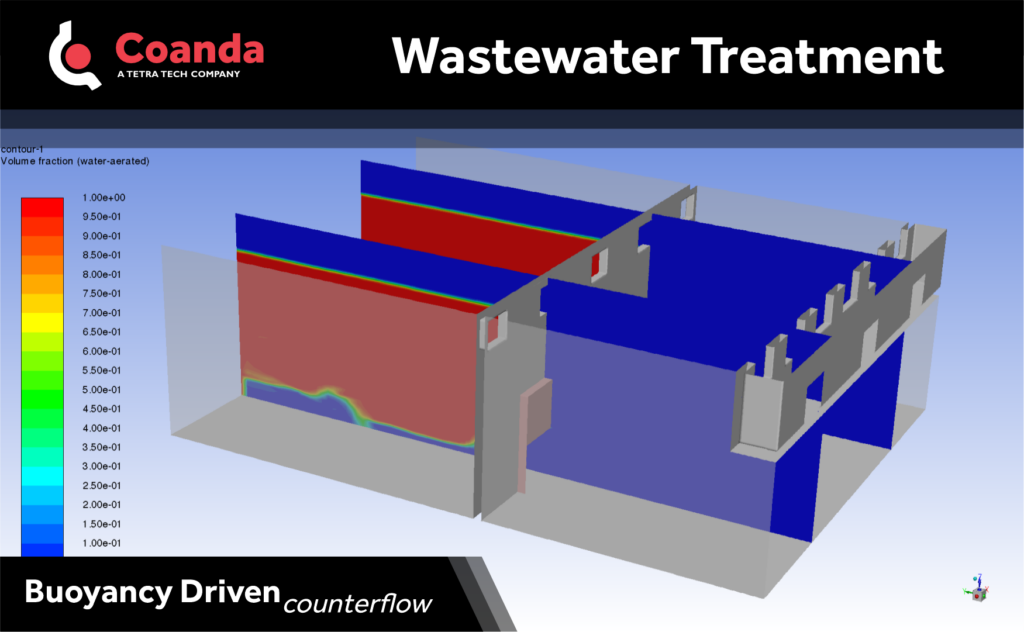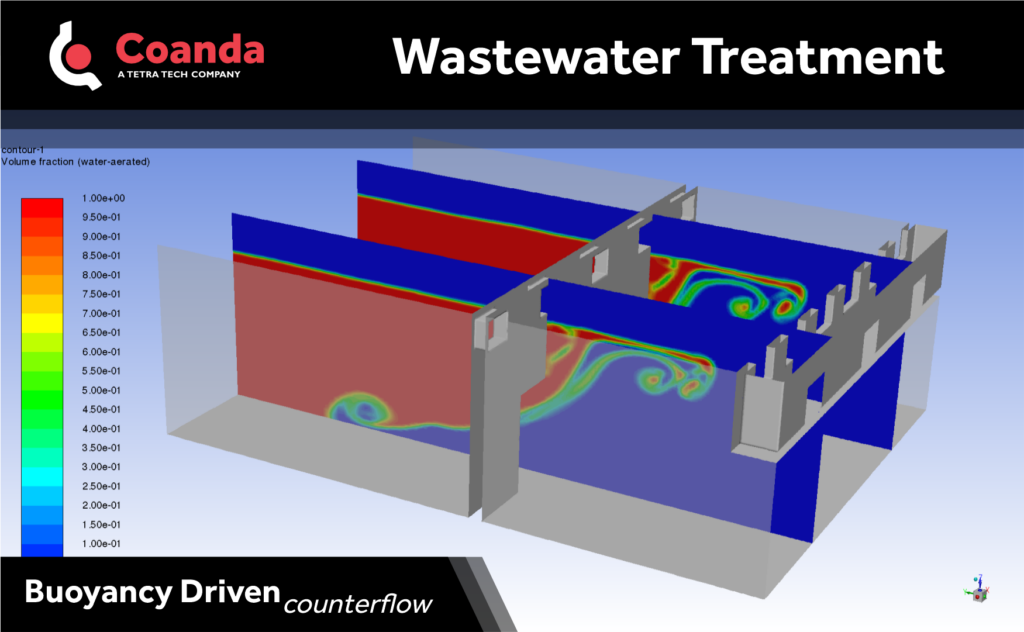CFD Application for Wastewater Treatment Plants (WWTP)
Posted on November 30, 2023 Computational Fluid Dynamics Water
Buoyancy-driven counter flow
Several previous posts that dealt with the application of CFD to wastewater treatment plants (WWTP) demonstrated the particular benefit of this tool for the prediction of free surface flows. In this post, we discuss the concept of buoyancy-driven counter flows and how CFD simulations can accurately predict the behavior of these flows and eliminate their effects through relatively simple modifications.
Buoyancy-driven counter flow is a hydraulic phenomenon that occurs due to a density difference between interfacing fluids, causing a pressure gradient and resultant counterflow between the liquid zones. A common illustration of this in nature occurs at an estuary, where saltwater and freshwater mix. However, this can also occur in WWTP processes due to the differences in density caused by aeration of wastewater. These types of flows are represented by a characteristic buoyancy velocity which depends on the density difference between the fluids and the height of the opening in question. This velocity can be used to quantify the counterflow against the bulk flow direction and is minimized by decreasing the characteristic height of the flow opening.
CFD modeling was utilized to engineer innovative baffle solutions to minimize the buoyancy-driven counterflow and maximize biological process efficacy for a biological nutrient removal (BNR) process upgrade at a WWTP. Simulations of the original, unbaffled scenario determined that the buoyancy velocity was over six times greater than the bulk flow velocity, demonstrating significant interfacing of the aerobic and anoxic zones. Modeling results highlighted that a baffle scenario eliminated back-mixing by minimizing the characteristic height with strategic upstream and downstream baffling. This case study underscores the benefits of CFD modeling to address BNR process efficacy and to guide efficient and innovative designs.
Note, a more detailed presentation of this case study was given at the 2023 Rocky Mountain Water Conference in Loveland, Colorado with Isabelle Sexton from Tetra Tech IEW.




